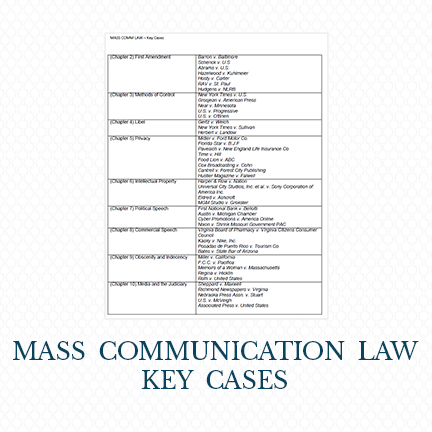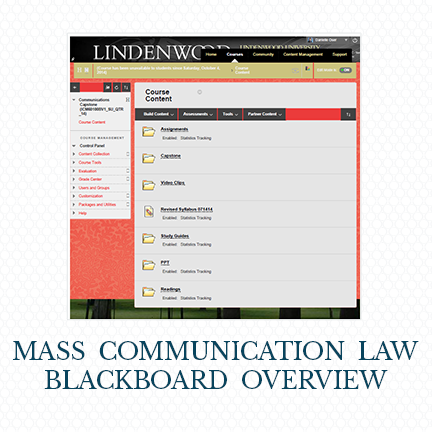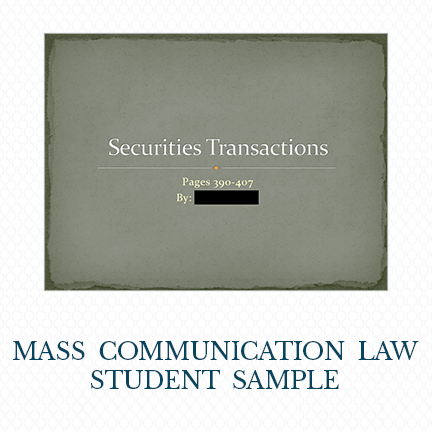“The tests were from exactly what was discussed in class. [Professor Oser] held us accountable for completing the assignments when they due, no exceptions. The class was very applicable to life outside the classroom.”
“The class is extremely important for those going into the communications world. It helps to know what you can and you can’t do. The examples of different cases helps to understand the material better.”
Description
Students investigate the study of laws that affect and regulate the mass media. This course includes an analysis of constitutional, statutory, and administrative laws. It is offered every semester.
Objectives
Upon completing the course, students will be able to do the following:
- To assist students in gaining a general understanding of the significant areas of mass media law, such as libel, privacy, broadcast regulation, and copyright.
- To help students compare and analyze Court decisions.
- To interpret the law and apply the law to various scenarios, using proper forms of legal documentation
- To help students understand the “rules of the game” by comprehending the practical application of law.
Instructional Methods
- Case Study Presentations
- Not to exceed five slides (Be sure to define any vocabulary words that occur — i.e., tort, actual malice, private figure, clear and present danger)
- What are the facts of the case? (Plaintiff, Defendant, legal argument/issue)
- What is the holding? (Court ruling) Were there any dissenters? What was the argument against the ruling?
- What precedent was set?
- Why is the case essential to communicators? Why should you care?
- Chapter Presentations
- Not to exceed 15 minutes
- Please keep it simple, cover the topics in whatever way you think will be memorable, and still teaches your classmates.
- Feel free to utilize outside resources to help make your point. (Videos, games, handouts)
- 25 points of the assignment includes a study guide that covers what you have gone over, including a 5-question quiz for your section.
- Exams







